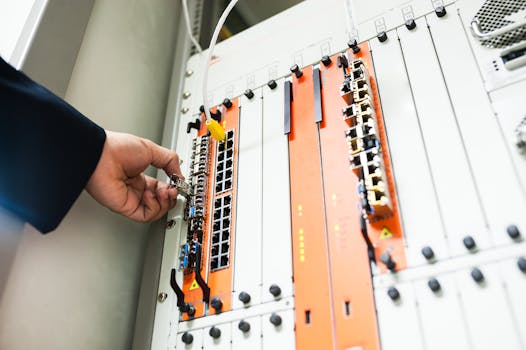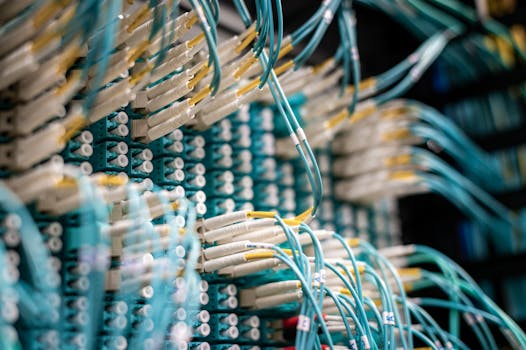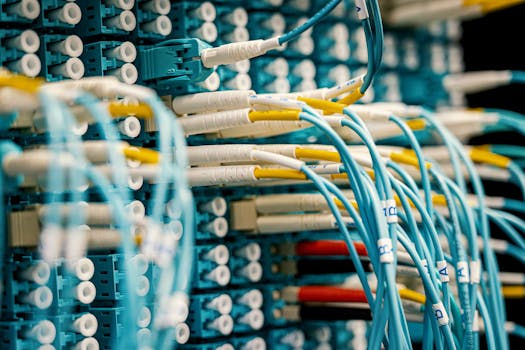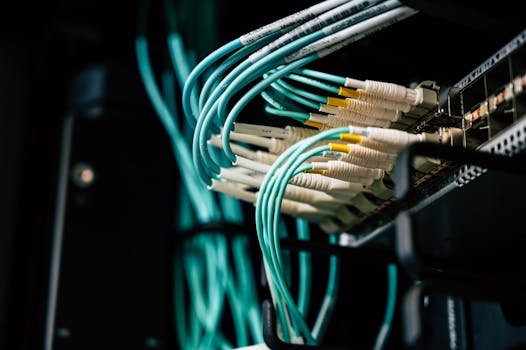
The Role of Fiber Optics in 5G Connectivity: Unlocking the Potential
Fiber Optics in 5G Connectivity

Fiber Optics in 5G connectivity is revolutionizing the way we access and share information. The fifth generation of wireless technology, or 5G, promises to deliver faster data speeds, lower latency, and greater connectivity than its predecessors. However, the successful deployment of 5G networks relies heavily on the presence of a robust and reliable fiber optic infrastructure. In this article, we will explore the role of fiber optics in 5G connectivity and how it is shaping the future of telecommunications.
How Fiber Optics Enable 5G Connectivity

Fiber optic cables are the backbone of modern telecommunications, providing the high-speed data transmission required to support the vast amounts of data generated by 5G devices. Fiber optics work by transmitting data as light signals through thin glass or plastic fibers, allowing for faster and more reliable data transfer than traditional copper cables. In the context of 5G, fiber optics play a critical role in several areas, including:
- Backhaul: Fiber optics are used to connect cell towers to the core network, providing the high-speed data transmission required to support 5G services.
- Fronthaul: Fiber optics are used to connect small cells and distributed antenna systems (DAS) to the core network, enabling the deployment of 5G networks in areas with high population density.
- Edge Computing: Fiber optics are used to connect edge computing nodes to the core network, reducing latency and enabling real-time processing of data.
Benefits of Fiber Optics in 5G Connectivity

The use of fiber optics in 5G connectivity offers several benefits, including:
- Faster Data Speeds: Fiber optics enable faster data transmission, supporting the high-speed requirements of 5G applications such as online gaming, virtual reality, and 4K video streaming.
- Lower Latency: Fiber optics reduce latency, enabling real-time communication and processing of data, which is critical for applications such as autonomous vehicles and remote healthcare.
- Greater Reliability: Fiber optics are less prone to interference and outages, providing a more reliable connection than traditional copper cables.
Challenges and Limitations

While fiber optics play a crucial role in enabling 5G connectivity, there are several challenges and limitations to their deployment, including:
- Cost: The deployment of fiber optic infrastructure can be costly, particularly in rural or hard-to-reach areas.
- Complexity: The deployment of fiber optic infrastructure requires specialized expertise and equipment, adding complexity to the deployment process.
- Regulatory Framework: The regulatory framework governing the deployment of fiber optic infrastructure can be unclear or inconsistent, creating uncertainty for operators and investors.
Conclusion

In conclusion, fiber optics play a vital role in enabling 5G connectivity, providing the high-speed data transmission, low latency, and reliability required to support the vast amounts of data generated by 5G devices. While there are challenges and limitations to the deployment of fiber optic infrastructure, the benefits of fiber optics in 5G connectivity make them an essential component of modern telecommunications. As the demand for 5G services continues to grow, the importance of fiber optics will only continue to increase, driving innovation and investment in the telecommunications sector.